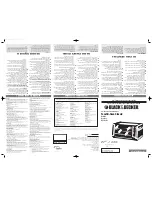
40
004778300 14/09/2020
The components that make up the gas
flue evacuation system must be de-
clared suitable for the specific operat-
ing conditions and provided with CE
marking.
It is mandatory to create a first vertical
section measuring at least 1.5 meters to
guarantee correct expulsion of the flue
gases.
It is advisable to make a maximum of 3 direction
changes, in addition to that resulting from the
rear connection of the appliance to the chimney,
using 45 90 ° bends or Tee fittings (
Always use a Tee fitting with inspection cap at
each horizontal and vertical change of the gas
flue path (
MA
X 2 - 3 m
MAX 2 - 3 m
C >
3 - 5
%
B
B
B
Fig. 11
On the first tee, at the gas flue outlet of the ap
pliance, a pipe must be connected at the bottom
for the evacuation of any condensation that may
form in the chimney (
Fig. 12
The horizontal sections must have a maximum
length of 23 m with an upward incline of 35%
Anchor the pipes with suitable collars to the wall.
The flue gas fitting MUST NOT BE connected:
• to a chimney used by other generators (boilers,
stoves, fireplaces, etc. ...);
• to air extraction systems (hoods, vents etc. ...)
even if "ducted".
It is forbidden to install shutoff and draught
valves.
The exhaust of the combustion products must
be provided on the roof.
5.6 Roof exhaust with traditional
fireplace
The chimney for the evacuation of flue gases
must be made by qualified personnel in compli
ance with standards UNI 10683 EN 185612 EN
1857EN 1443 EN 1338413 EN 123911 both in
terms of the dimensions and the materials used
in its construction.
The evacuation of flue gases via a traditional
chimney (
Fig. 13) can be done as long as you are
sure of the state of maintenance of the chimney.
In the case of an old chimney, it is advisable to
renew it using ducting.
















































